Ein Saharonim is the only water source for Machtesh Ramon, the largest natural crater in Israel. The Nabateans were the only ones who were able to cross the Arabian desert. They knew the secrets of the desert: where the secret water spots were hidden, and they knew how better to preserve water, including the use of dams, plastered cisterns, and water conduits. Because they knew these secrets, they held a monopoly over the spice trade for centuries.
Spice Route
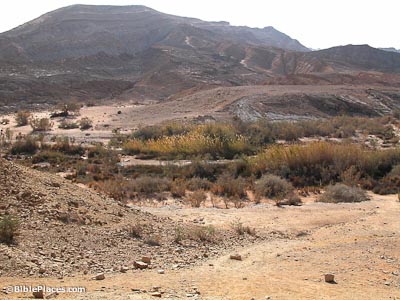
Water in the Negev
Khan Saharonim
Near Ein Saharonim are the remains of a Nabatean caravanserai, indicating that this was one of their stops on the Spice Route. Military camps and forts like this one served as a stopping point on their journey and as protection from highway robbers along the way. They had many camps like this one, in addition to various cities, the most important of which were Avdat (Oboda), Nessana (Nitzana), and Elusa (Halutzah). Others included Soubaita (Shivta), Mampsis (Mamshit), and Rehovot-in-the-Negev.
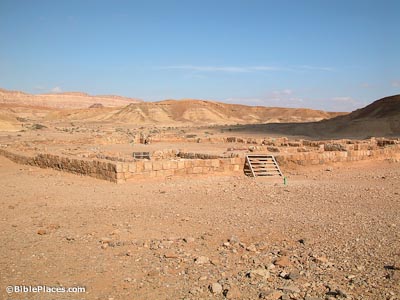
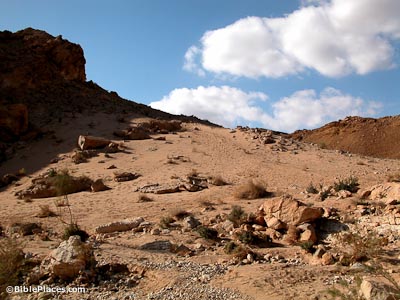
The Nabateans
The Nabateans were a group of Arab commercial nomads from the Arabian Peninsula. First mentioned in Ashurbanipal’s list of enemies in 647 BC, they appeared in the Negev in the 4th century BC and pushed the Edomites (Idumeans) north into southern Judah. Originally they were a pastoralist people, but as traders they grew wealthy, holding a monopoly of the market because they knew the secrets of the desert. They reached their greatest prosperity under Aretas III (9 BC – AD 40), but were already beginning to settle down in cities. The Nabateans are best known for their damming systems, vineyards, horse breeding, and stone cutting.
The Spice Route
The route the Nabateans took across the Negev with their camel trains was called the Spice Route; it stretched from the Persian Gulf (Arabia) to the ports of Gaza, passing through Petra (their capital) and Avdat. Their constant travel made for a transitory life. They did not live in houses, but they did built elaborate tombs for their dead, especially at Petra and Egra. Self-denial was a way of life, and they would not touch alcohol, which they saw as a sign of settling down.
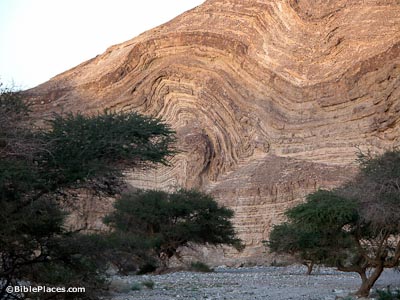
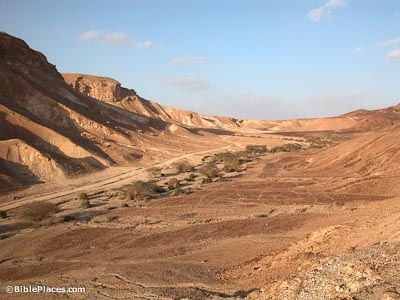
Items of Trade
The Nabateans traded items coming from the Far East (especially what is today India, Thailand, China, and Korea) and Southern Arabia. Many of the items were brought to Arabia by sea, and when they reached Gaza, they were shipped off to Rome. Spices were the most common of these items, giving the desert route its name. Other products included perfumes, herbs, wood, gems, silks, medicines, and metals. The Nabateans were the mediators of these products and goods; they even sold asphalt from the Dead Sea to Egypt for use in mummification, coffin-sealing, and glue.

Download all of our Negev and the Wilderness photos!
$34.00 $49.99 FREE SHIPPING
Related Websites
See our page on Drugs, Spices, and Perfumes. For historical images of desert travel, see Life in the Holy Land.
Incense Route – Desert Cities in the Negev (UNESCO) As always, UNESCO is most interesting for the maps and other downloadable documents related to the site. In this case, the page offers an interesting map of the Negev cities along the Spice Route.
New Insights on Ancient Spice Trade (Bible History Daily) A helpful article with numerous photos and information on related excavations in southern Israel.
Nabataean Trade Routes (Nabataea.net) Lengthy discussion of all of the Nabataean trade routes. Provides a helpful map.
Traveling the ancient Incense Route in the Negev (ISRAEL21c) This travel article describes the modern experience of tracing the Spice Route, and it includes several pictures.
86-year-old guide helps discover section of Incense Route lost for millennia (The Times of Israel) For those interested in the gritty details of reconstructing an ancient route, this story may make for an interesting read.